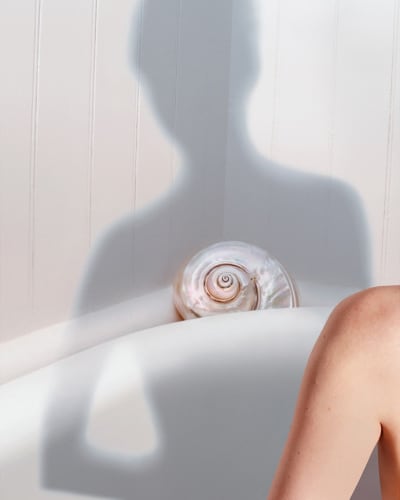Art is in Souders’s genes. Her mother, grandparents, aunt, and cousin were all painters. From an early age she learned how to paint and draw, and went to her mother's gallery shows. A book on Man Ray inspired a love for photography’s technical outer limits and the Surrealist’s inward focus, and she began shooting in black and white. Souders’s father was a physicist, and she was raised with elaborate chemistry sets, so it’s not surprising that she reveled in darkroom operations and came to approach her studio as a lab in which to experiment with mechanical and natural process, and optical phenomena. Much like a scientist, she isolates primary building blocks from wide-ranging sources and conceives recombinant forms for them. She calls herself a tinkerer, and quite often her raw material is the residue of past experiments.
With a collagist’s puzzle-part invention, Souders has fashioned a personal poetics, both quirky and sublime, around the objects and residual photographic effects she coaxes into her work. A born scavenger, she finds rich meaning in the most ephemeral or mundane stuff around her. Her gift for minimalist design and idiosyncratic color saves her from chaos and results in a blithe balancing act of chance and intention. Her approach is that of a conceptual artist, hammering out delicate frameworks for chasing ideas down rabbit holes into her own cerebral wonderland.
Because her images steer clear of the “real” observed-as-is world, Souders often fields questions about her proper definition: artist who uses photography, photographer who embraces art process, or other qualifying labels. It’s sufficient, says Souders, to call her a photographer, period. She is about the alchemy of turning life thoughtfully into art using photographic means, and that’s credential enough. She juggles pregnant visual cues to freeze time and retrieve it at will, best achieved by building an intimate language of triggers and allusions. Some of these cues are wrested from art history, as in Colors of Napoleon (2010), which features daubs of pigment on an iconic portrait of the emperor. More often, her ties to the past are encoded rather than obvious, and refer to her own life in diaristic playback.

